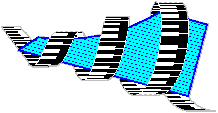
 |
PCH Publishing |
Home | Index | Two Instruments with Basso Continuo | How to order | Email
|
|
Jean-Marie Leclair (d. 1714?) View a sample page. |
DFC-17 $7.50 | ||
| Part | Number of pages |
|---|---|
| Score (with figured, unrealized bass) | ii+8 |
| Basso Continuo (viola da gamba, cello) | 3 |
| Viola da gamba | 4 |
| Violin or flute | 4 |
Jean-Marie Leclair (1697-1764) was a virtuoso violinist perhaps best known for bringing the use of double stops into the mainstream of French performance practice. His Opus 2, from which this trio sonata is taken, was first published in 1728, then reprinted with some corrections in 1743. It contains 12 sonatas (perhaps following the Corellian model): 11 for a single instrument with basso continuo, and the present trio sonata. Among the solo sonatas, four are indicated as playable (and work very well) on transverse flute, while the rest are replete with double stops and suitable only for violin. In principle an ensemble comprising violin, viola da gamba, and harpsichord could play everything in the book. However Leclair did specifically indicate that the bass line in the trio sonata could be doubled by a "violonchel", this despite the next-to-last note of the Allegro falling out of range.
Leclair must have liked this trio sonata very much, because he included a minimally reworked version of it for two violins and continuo in his final publication, a 1753 volume of overtures and trio sonatas. That sonata is also available from PCH Publishing as DFC-18.
The 1743 version, on which this edition is based, has very few mistakes and is therefore reproduced here virtually note for note. In particular, the figures are extremely accurate and detailed and have been altered only in the slightest way. In some other areas there are intriguing additions to the two-violin version: (1) a repeat symbol at the very end; (2) ties in bars 2-3 of the Sarabanda and bar 15 of the Adagio, and (3) many more slurs in the violin parts, especially on dotted pairs of notes in the Adagio. The performing ensemble should decide for itself whether to incorporate these items.
In this piece Leclair indicated trills with a plus sign. Aside from grace notes, there are no other ornaments, including mordents. However, in keeping with period practice, it is perfectly acceptable to add other ornaments as appropriate, especially a mordent after an ascending appogiatura.
It is important to know that notational conventions of the time did not admit the use of dotted rests. In performance, the the player should add a dot to a rest when the following note leads into a notated dotted figure, such as in the very first entrances of both the violin and gamba.
This is indeed one of the finest trio sonatas of the genre, combining Italian flair and French elegance in ideal proportions. I hope you will enjoy playing it as much as I have over the years.
Don Simons
Redondo Beach, October, 2001
Top | Home | Index | Two Instruments with Basso Continuo | How to order | Email